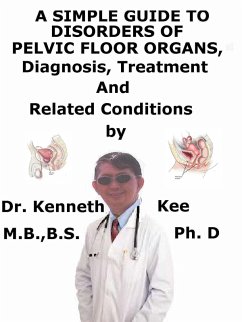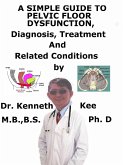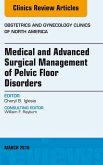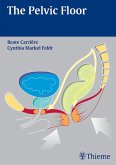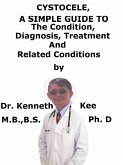A pelvic floor disorder (PFD) happens when the muscles and connective tissue (holdimg everything in the pelvis in position) of the pelvis become weaken or are injured.
Types of Pelvic Floor Disorders:
A. Bladder Control Disorders
These can also be termed urinary incontinence and involve any leaking of urine.
This is produced by the bladder falling from its proper position in the pelvis.
1. Stress Incontinence
This is a bladder control disorder that induces a leaking of urine during activities that "stress" the bladder (laughing, coughing, sneezing, heaving lifting, etc.)
2. Urge Incontinence
This is a bladder control disorder that produces loss of urine after a sudden, strong urge to urinate.
This is also termed overactive bladder
B. Bowel Control Disorders
These can also be termed encopresis or fecal incontinence.
Leaking of stool, either liquid or solid, is indicated a bowel control disorder.
This can be produced by the rectum (bottom portion of the intestine) moving from its proper position in the pelvis or damage to the group of muscles that help to close the anus.
C. Pelvic Organ Prolapse
This happens when one or more of the pelvic organs fall out of its proper position in the pelvis and move downward into the vagina.
This results from the muscles and ligaments holding these organs in position weakening over time.
Prolapse simply indicates the slipping down or forward of an organ or body part.
A pelvic organ prolapse can happen to any organ in the pelvic floor.
The doctor may employ different names for different types of prolapse.
1. Cystocele: the bladder dropping into the vagina
Cystocele prolapse, also termed dropped bladder, is the protrusion of the bladder into the vagina
It happens caused by the weakening of the pubo-cervical fascia between the bladder and vaginal wall permitting the bladder to move downwards and backwards against the anterior wall of the vagina.
A pouch may also develop in the bladder causing the retention of residual urine.
Symptoms are:
a. Urinary frequency,
b. Incomplete emptying of the bladder,
c. Recurrent UTI's and
d. Stress incontinence.
2. Urethrocele: the urethra, the tube that connects the bladder to the outside of the body for urinating, bulges into the vagina
Urethrocele prolapse is the protrusion of the female urethra into the vagina.
Due to the urethra being directly connected to the anterior wall of the vagina it can fall backwards and downwards when there is insufficient support from the vagina or surrounding fascia.
This is the least frequent type of prolapse and is most frequent in post-menopausal women and pre-pubertal girls.
Cystourethrocele is a combination of a cystocele and urethrocele and it is the most frequent type of prolapse
3. Enterocele: the small intestine drops and pushes the back of the vagina
Enterocele is when the small bowel presses down from the abdomen onto the posterior wall of the vagina through the rectovaginal septum and produces a herniation (protrusion in the space between rectum and vagina).
An enterocele normally accompanies a uterine prolapse.
4. Rectocele: the rectum, or the last portion of the small intestine which ends at the anus, bulging into the vagina
Rectocele prolapse happens when the bowel and rectum
Causes are:
1. Age
2. Direct injury to levator ani
3. Pregnancy and Childbirth
4. Genetics
5. Hysterectomy
6. Increased abdominal pressure
7. Constipation
8, Prolonged physical exertion
9, Obesity
10. Prostate surgery
TABLE OF CONTENT
Introduction
Chapter...
Dieser Download kann aus rechtlichen Gründen nur mit Rechnungsadresse in A, B, CY, CZ, D, DK, EW, E, FIN, F, GR, H, IRL, I, LT, L, LR, M, NL, PL, P, R, S, SLO, SK ausgeliefert werden.

